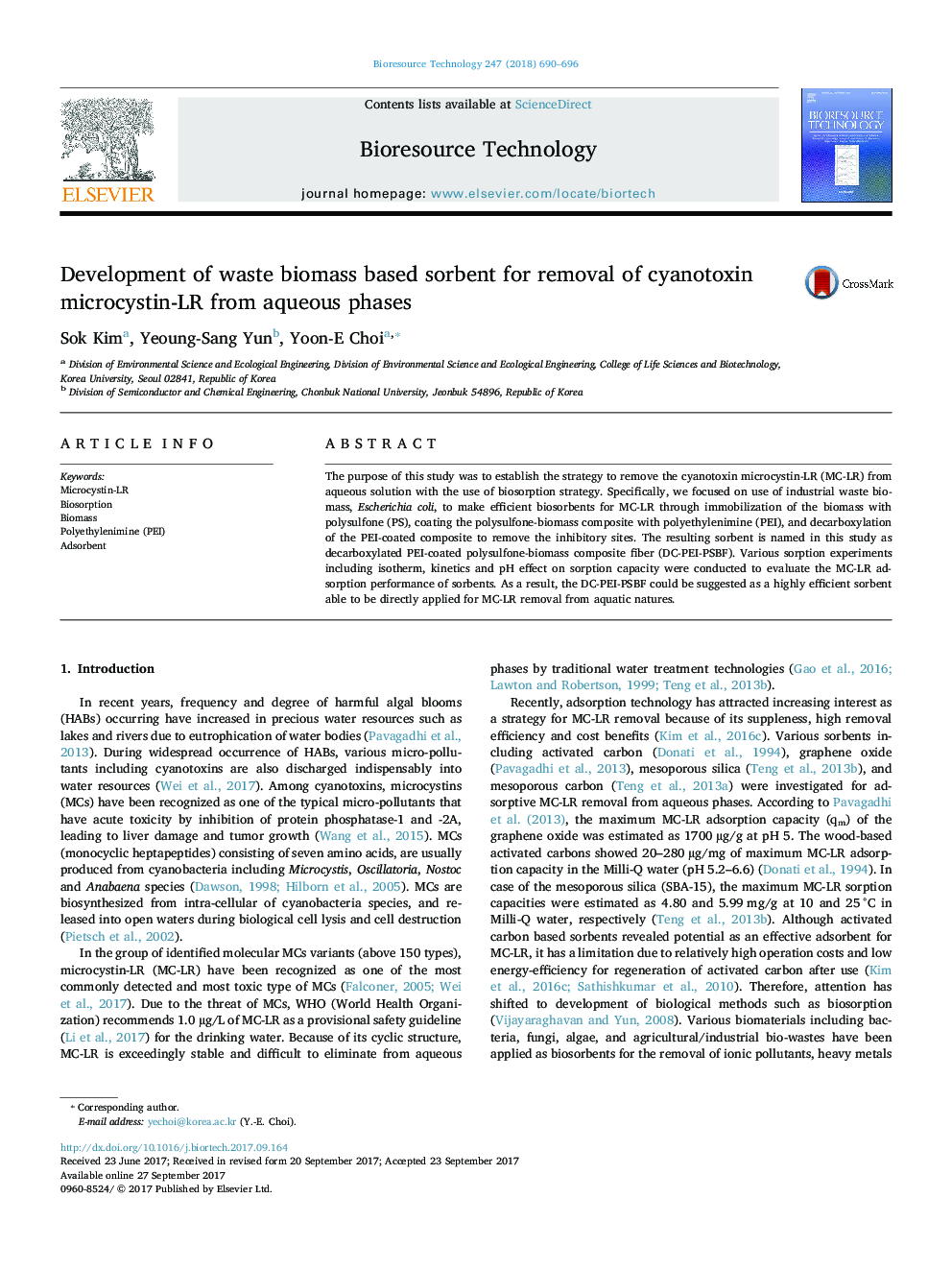| Article ID | Journal | Published Year | Pages | File Type |
|---|---|---|---|---|
| 4996693 | Bioresource Technology | 2018 | 7 Pages |
â¢Waste E. coli was valorized as a stable and high-performance sorbent for MC-LR.â¢MC-LR adsorption equilibrium was reached within 60 min at natural pH.â¢The MC-LR uptakes and affinity were dependent upon the solution pH.â¢The sorption performance was enhanced by PEI-coating and decarboxylation.
The purpose of this study was to establish the strategy to remove the cyanotoxin microcystin-LR (MC-LR) from aqueous solution with the use of biosorption strategy. Specifically, we focused on use of industrial waste biomass, Escherichia coli, to make efficient biosorbents for MC-LR through immobilization of the biomass with polysulfone (PS), coating the polysulfone-biomass composite with polyethylenimine (PEI), and decarboxylation of the PEI-coated composite to remove the inhibitory sites. The resulting sorbent is named in this study as decarboxylated PEI-coated polysulfone-biomass composite fiber (DC-PEI-PSBF). Various sorption experiments including isotherm, kinetics and pH effect on sorption capacity were conducted to evaluate the MC-LR adsorption performance of sorbents. As a result, the DC-PEI-PSBF could be suggested as a highly efficient sorbent able to be directly applied for MC-LR removal from aquatic natures.
